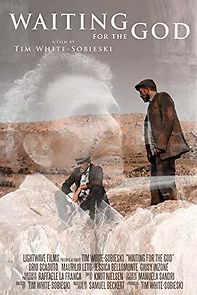|
The film “Waiting for the God” transcends geographic and ethnic boundaries and is cosmopolitan in nature. The portrait of daily life painted in the film is a dismal one. It is repetitive and stagnant. It lacks meaning and purpose and entails perpetual suffering. The solution (which none of the characters take) would seem to be action and choice despite the ever-presence of uncertainty, and an awareness of one’s surroundings and past actions. As one character says, “habit is a great deadener” - our actions should stem from conscious choice rather than apathy. Vladimir (the protagonist) wonders towards the end of the film whether or not he is even awake. “Waiting for the God” has a unique cinematic quality, combining traditions of theatrical staging with meticulous cinematography and attention to every detail in lighting, composition and navigating a camera through the story line. The film is shot in a ruined old Italian city completely abandoned by its citizens many years ago. It is one of the most amazing places on the planet and is under the supervision of UNESCO. The look of the film presents a unique balance of phantasmagorical landscapes and a sublime play of four lead actors whose presence and acting merge with the landscape. |
||
| Ratings: | IMDB: 0.0/10 | |
| Released: | October 1, 2015 | |
| Runtime: | 60 min | |
| Genres: | Drama | |
| Cast: | Orio Scaduto Maurilio Leto Jessica Bellomonte Giusy Inzone | |
| Crew: | Tim White-Sobieski | |



Luvlinguae : Zoomer fantasy film about how you are a special snowflake trying to "find yourself" in a c...